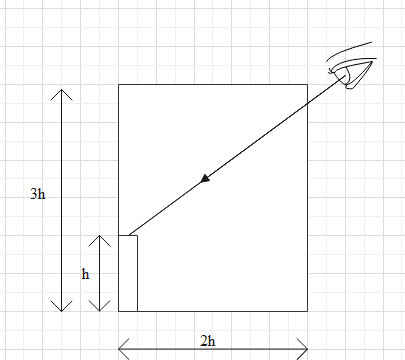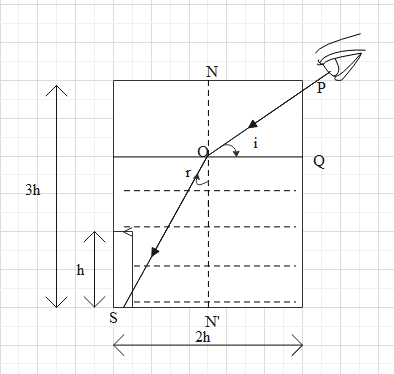Question
Question: An observer can see through a pin-hole, the top of thin rod of height h, placed as shown in figure. ...
An observer can see through a pin-hole, the top of thin rod of height h, placed as shown in figure. The beaker height is 3h and its radius is h. When the beaker is filled with a liquid up to a height 2h, he can see the lower end of the rod. Then the refractive index of the liquid is
& \text{A}.\text{ }\dfrac{5}{2} \\\ & \text{B}\text{. }\sqrt{\dfrac{5}{2}} \\\ & \text{C}\text{. }\sqrt{\dfrac{3}{2}} \\\ & \text{D}\text{. }\dfrac{3}{2} \\\ \end{aligned}$$Solution
With the help of simple trigonometry we can find the angle of incidence and angle of refraction. Then we can apply Snell’s law to find the refractive index of the water. Here when the beaker is filled with the liquid the ray bends towards the normal and the ray gets refracted.
Formula used:
n1sini=n2sinr
sinθ=hypotenuseopposite
Complete answer:
The simplified way of the diagram can be given as

And when the liquid is filled then the diagram can be given as

We can find the angle of incidence and the angle of refraction from the above diagram by applying a simple trigonometry rule. With the help of trigonometry, angle of incidence (i) can be given as
sini=hypotenuse(OP)opposite(OQ)
Where, hypotenuse can be given as
hypotenuse=(opposite)2+(adjacent)2
Hence we can write
⇒OP=OQ2+PQ2
Where OQ=h and PQ=h
